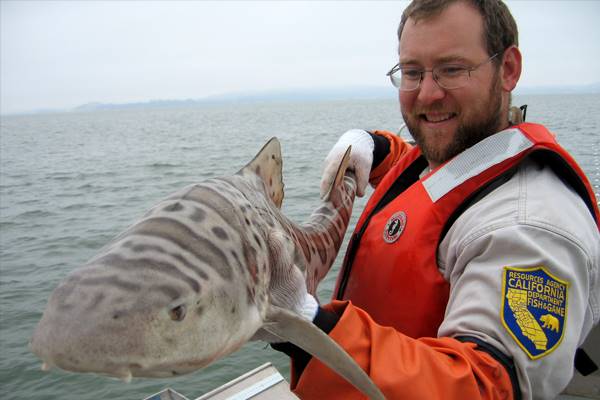California study’s refundable tags motivate anglers to report sturgeon catches
If you’re targeting white sturgeon in California, chances are you’re not having much luck. According to Marty Gingras, program manager at the state’s Department of Fish and Wildlife, it takes the average angler about 50 hours of fishing to catch a legal-sized sturgeon. The future is looking a little brighter for sturgeon fisheries, however: Gingras is leading a project to monitor sturgeon populations that he hopes will improve the species’ annual survival rate.
“The sturgeon fishery is relatively small but culturally important,” Gingras said. “We consider sturgeon to be ‘California heritage’ fish.”
California sturgeon fisheries were closed for the first half of the 20th century to help the species recover from decades of overfishing. In 1954, the fisheries reopened to new management practices that aimed to protect the white sturgeon’s recovery. The tagging and tracking project underway today is part of that 60-year effort to rejuvenate the species.
“We started tagging sturgeon when the fishery reopened, because tagging gives most of the most-important information required for proper management of sturgeon,” Gingras said.
This year’s tagging efforts ran from August until the end of October. Two research vessels trolled fishing grounds in San Pablo Bay and Suisun Bay, catching and measuring 468 sturgeon and tagging the 250 that met the minimum study size. An average day of tagging, according to Gingras, was marked by “nice weather and slow fishing.”
Each tag displays an identification number and a reward ranging from $20 to $100. Anglers that land a tagged sturgeon can record information about their catch and send the tags back to the DFW to obtain their reward. Gingras said he was surprised to find that return rates for the $100 tags were much higher than those for the $20 and $50 tags.

Leopard sharks (pictured) and bat rays are commonly caught alongside white sturgeon and green sturgeon in San Pablo Bay. (Credit: California DFW)
Data gained from tag returns allow the DFW to “estimate annual abundance, annual survival rate and annual harvest rate,” Gingras said. “Those are three of about ten important metrics we use to understand the population and fishery dynamics, which then allows us to assess alternative fishing regulations and habitat protections.”
Many of the tagged sturgeon were members of a cohort produced by the white sturgeon population in 2006, the only successful sturgeon cohort reared in California since 1998. A result of more stringent management practices, the 2006 cohort is a rare exception for a species that only seems to produce substantial young on “the wettest of the wet years,” Gingras said.
Just to the north, the white sturgeon fishery centered around the Columbia River in Oregon and Washington exhibits “good to great recruitment,” he said. “Ours are terrible to pretty dang good — but mostly terrible.”
With the 2006 cohort beginning to reach legal size this year, sturgeon anglers could see more frequent catches over the next few seasons. The information gleaned from each reported catch will help direct studies in the future, studies that Gingras said excite his fellow researchers as much as the anglers vying for those elusive $100 tags.
“Most of the people in our program work with small fish and plankton,” Gingras said. “The sturgeon study always has volunteers line up, because people love to see and work with the wide range of big fish we handle.”



0 comments